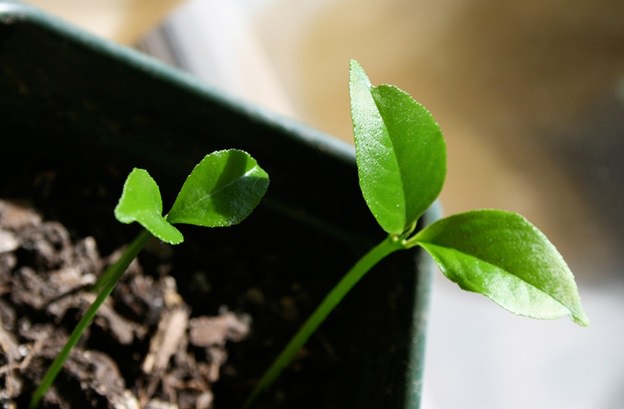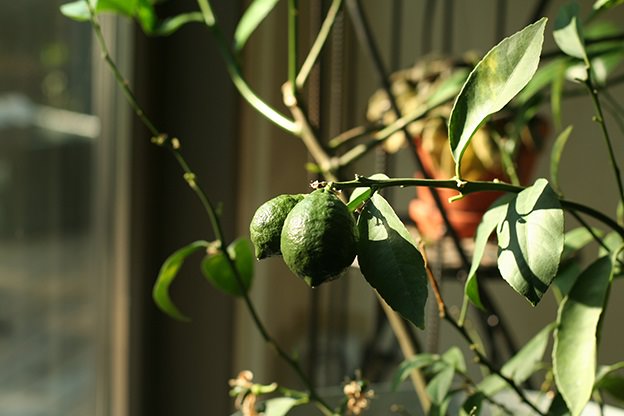
Biting into an orange and getting a bitter, gritty surprise between the teeth doesn’t have to be an entirely unpleasant experience. Citrus fruits that contain seeds are underappreciated as sources of indoor gardening fodder.
Planting trees—especially fruit trees—from seed is always a bit of a gamble. Apples, for example, produce seedling offspring that can be referred to as “extreme heterozygotes.” This means the genetic possibilities in an apple seed are staggering, and there are no guarantees the resulting fruit will be palatable.
Unlike apples, however, citrus plants have more of a propensity toward consistency. Their seeds have a unique characteristic called “nucellar embryony” (Nu+), meaning they contain a genetic clone of the parent plant. So when planting a seed from a Meyer lemon, for example, you may very well plant another Meyer lemon.
Any viable citrus seed can be planted, and most germinate in a manner of days, provided they have a warm and humid environment. Many gardeners germinate them in a moist paper towel in a plastic bag, and then transplant them to plugs or small pots.
Once citrus seeds germinate, they generally take well to growing in pots. Gardeners in temperate zones usually can’t cultivate anything beyond a cousin of true citrus—Trifoliate orange (Poncirus trofoliata)—outdoors, so the ability to thrive in containers is welcome. In the summer, a citrus seedling collection can soak up the sun on a patio or balcony, and in the winter, the plants can reside by a window indoors.
A Mediterranean terra rossa-type soil—high in clay, rock material and iron oxides—is usually ideal for these potted trees and can be purchased in most greenhouses or garden centers or made at home with proper amendments.

In the off chance the resulting fruit isn’t palatable, citrus trees have an array of other edible or useful parts. Kaffir lime (Citrus hystrix) leaves, for example, are an important part of a variety of South Asian cuisines. Additionally, inedible fruits can yield edible zests and candies made from peels or jellies and marmalades made from their fruit.
Personally, I’ve planted mandarin orange, satsuma, tangerine, navel orange, blood orange, calamondin, kumquat, kabosu, yuzu, grapefruit, pomelo, lemon and lime from seed. While I haven’t seen fruit on all of my seedlings yet, it’s certainly lovely to have an array of trees that emanate rich, fragrant essential oils from their leaves, each different from the other.
A store-bought indoor lemon tree isn’t cheap, so embracing the potential contained in the seed from a lemon sliver on a drink isn’t a bad way to get a free houseplant.




